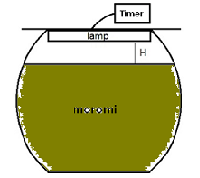Ultra-Violet Treatment for Fermenting Low-Salt Soya Sauce
DOI:
https://doi.org/10.46604/peti.2020.4117Keywords:
soya sauce, law salt, ultra-violet treatment, native bornAbstract
Low-salt soya sauce has become a market trend due to consumers' demand for a low sodium diet life. In tradition, a low-salt soya sauce (with salt concentration below 14.4%) is made from a high-salt one (18% salt concentration) through diluting or reducing the sodium content. The post processing deteriorates the quality of the soya sauce produce as some specific, beneficial chemical components are inevitably removed. In production of a native-born low-salt soya sauce, a key problem encountered is possible microbial contamination that easily develops in a low salt environment. In this study, we evaluated the effect of ultra-violet (UVC 254nm) irradiation on soya mash of 12% salt concentration fermented at 35°C. The ultra-violet treatment could effectively prevent the soya mash from microbial contamination.
References
D. Fukushima, “Soy proteins for foods centering around soya sauce and tofu,” Journal of the American Oil Chemists Society, vol. 58, no. 3, pp. 346-354, March 1981.
T. Yokotsuka, “Soya sauce biochemistry,” Advances in Food Research, vol. 30, pp. 195-329, 1986.
W. H. Huang, “Influences of a temperature controlled system powered by solar energy and an UV treatment on the quality of soy sauce,” Master Dissertation, Department of Food Science, National Chiayi University, Chiayi, Taiwan, 2016.
J. Luo, L. Ding, X. Chen, and Y. Wan, “Desalination of soy sauce by nanofiltration,” Separation and Purification Technology, vol. 66, no. 3, 429-437, May 2009.
J. S. Lee, S. J. Rho, Y. W. Kim, K. W. Lee, and H. G. Lee, “Evaluation of biological activities of the short-term fermented soybean extract,” Food Science and Biotechnology, vol. 22, no. 4, pp. 973-978, August 2013.
Y. Zhu and J. Tramper, “Koji-where east meets west in fermentation,” Biotechnology Advances, vol. 31, no. 8, pp. 1448-1457, December 2013.
R. Schueller, The soya sauce handbook: a reference manual for the food manufacturer, Kikkoman Corporation, Japan, 1996.
N. W. Su, M. L. Wang, K. F. Kwok, and M. H. Lee, “Effects of temperature and sodium chloride concentration on the activities of proteases and amylases in soya sauce koji,” Journal of Agricultural and Food Chemistry, vol. 53, no. 5, pp. 1521-1525, April 2005.
F. M. Yong and B. J. B. Wood, “Microbiology and biochemistry of soya sauce fermentation,” Advances in Applied Microbiology, vol. 17, pp. 157-194, 1974.
S. Ferng, W. H. Huang, C. P. Wu, Y. T. Lu, C. K. Hsu, R. Y. Y. Chiou, and C. H. Ting, “A controlled fermentation environment for producing quality soya sauce,” Advances in Technology Innovation, vol. 4, no. 1, pp. 11-20, January 2019.
N. X. Hoang, S. Ferng, C. H. Ting, Y. C. Lu, Y. F. Yeh, Y. R. Lai, and C. K. Hsu, “Effect of initial 5 days fermentation under low salt condition on the quality of soy sauce,” LWT-Food Science and Technology, vol. 92, pp. 234-241, June 2018.
J. A. Guerrero-Beltrán and G. V. Barbosa-Cánovas, “Review: advantages and limitations on processing foods by UV light,” Food Science and Technology International, vol. 10, pp. 137-147, June 2004.
N. X. Hoang, S. Ferng, C. H. Ting, W. H. Huang, R. Y. Y. Chiou, and C. K. Hsu, “Optimizing the initial moromi fermentation conditions to improve the quality of soya sauce,” LWT-Food Science and Technology, vol. 74, pp. 242-250, December 2016.
R. Y. Cui, J. Zheng, J. C. D. Wu, and R. Q. Zhou, “Effect of different halophilic microbial fermentation patterns on the volatile compound profiles and sensory properties of sauce moromi,” European Food Research and Technology, vol. 239, no. 2, pp. 321-331, August 2014.
X. L. Gao, C. Cui, H. F. Zhao, M. M. Zhao, L. Yang, and J. Y. Ren, “Changes in volatile aroma compounds of traditional Chinese-type soy sauce during moromi fermentation and heat treatment,“ Food Science and Biotechnology, vol. 19, no. 4, pp. 889-898, August 2010.
M. H. Kang, J. S. Kim, S. J. Park, and T. Shibamoto, “A study on biological and chemical changes in fermented soybeans (meju), grown under organic vs non-organic conditions, during storage,” Journal of Agriculture and Biological Sciences, vol. 3, no. 2, pp. 278-286, March 2012.
Y. Yan, Y. Qian, F. Ji, J. Chen, and B. Han, “Microbial composition during chinese soya sauce koji-making based on culture dependent and independent methods,” Food Microbiology, vol. 34, no. 1, pp. 189-195, May 2013.
S. Lee, J. Lee, Y. I. Jin, J. C. Jeong, Y. H. Chang, Y. Lee, Y. Jeong, and M. Kim, “Probiotic characteristics of bacillus strains isolated from korean traditional soy sauce,” LWT-Food Science and Technology, vol. 79, pp. 518-524, June 2017.

Published
How to Cite
Issue
Section
License
Submission of a manuscript implies: that the work described has not been published before that it is not under consideration for publication elsewhere; that if and when the manuscript is accepted for publication. Authors can retain copyright of their article with no restrictions. Also, author can post the final, peer-reviewed manuscript version (postprint) to any repository or website.

Since Oct. 01, 2015, PETI will publish new articles with Creative Commons Attribution Non-Commercial License, under The Creative Commons Attribution Non-Commercial 4.0 International (CC BY-NC 4.0) License.
The Creative Commons Attribution Non-Commercial (CC-BY-NC) License permits use, distribution and reproduction in any medium, provided the original work is properly cited and is not used for commercial purposes







